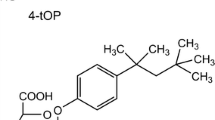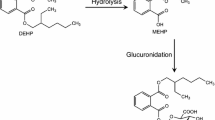Abstract
Dibenzo-p-dioxin is rapidly converted by microsome-NADPH systems, prepared from mouse, rat, and rabbit liver, and by intraperitoneally treated mice into unidentified, polar metabolite(s) that, in living mice, appear in the urine. In contrast, not any of these three liver microsome-NADPH systems convert 2, 3, 7, 8-tetrachlorodibenzo-p-dioxin into either trichlorodibenzo-p-dioxin or water-soluble products. In living mice, the tetrachloro compound, injected at the LD50 dose, is either not at all or not extensively converted to water-soluble products; the feces are the major route of elimination, possibly via the bile. A large proportion of the administered tetrachlorodibenzo-p-dioxin persists in unmetabolized form in the liver, partially concentrated in the microsomal fraction, 11 to 20 days after treatment. The metabolic stability and localization of the tetrachloro material indicate that the unmetabolized compound, rather than a metabolite, probably is responsible for its toxic effects in mammals and that the endoplasmic reticulum of the liver is a possible site of action.
Similar content being viewed by others
Literature cited
Blair, E. H. (ed.): The Origin and Fate of the Chlorodioxins. Advan. Chem. Ser., in press (1972).
Crosby, D. G., A. S. Wong, J. R. Plimmer, and E. A. Woolson: Photodecomposition of chlorinated dibenzo-p-dioxins. Science173, 748 (1971).
Elliott, M., and J. E. Casida: Optically pure pyrethroids labeled with deuterium and tritium in the methylcyclopentenonyl ring. J. Agr. Food Chem.20, 295 (1972).
Hodgson, E., and J. E. Casida: Metabolism of N:N-dialkyl carbamates and related compounds by rat liver. Biochem. Pharmacol.8, 179 (1961).
Hogeboom, G. H.: Fractionation of cell components of animal tissues. In S. P. Colowick and N. O. Kaplan (eds.): Methods in Enzymology, Vol. 1, pp. 16–19. New York: Academic Press (1955).
Kovacs, M. F., Jr.: Thin-layer chromatography for chlorinated pesticide residue analysis. J. Ass. Offic. Agr. Chem.46, 884 (1963).
Piper, W. N., and J. Q. Rose: The excretion and tissue distribution of 2, 3, 7, 8-tetrachlorodibenzo-p-dioxin in the rat. Advan. Chem. Ser., in press (1972).
Plimmer, J. R., D. G. Crosby, A. S. Wong, and U. I. Klingebiel: Photochemistry of dibenzo-p-dioxins. Advan. Chem. Ser., in press (1972).
Vinopal, J. H., I. Yamamoto, and J. E. Casida: Preparation of tritium-labeled dibenzo-p-dioxin and 2, 3, 7, 8-tetrachlorodibenzo-p-dioxin. Advan. Chem. Ser., in press (1972).
Wilson, J. G. (chm.): Report of the Advisory Committee on 2, 4, 5-T to the Administrator of the Environmental Protection Agency. Unpublished report (1971).
Author information
Authors and Affiliations
Rights and permissions
About this article
Cite this article
Vinopal, J.H., Casida, J.E. Metabolic stability of 2, 3, 7, 8-tetrachlorodibenzo-P-dioxin in mammalian liver microsomal systems and in living mice. Arch. Environ. Contam. Toxicol. 1, 122–132 (1973). https://doi.org/10.1007/BF01986002
Received:
Accepted:
Issue Date:
DOI: https://doi.org/10.1007/BF01986002




